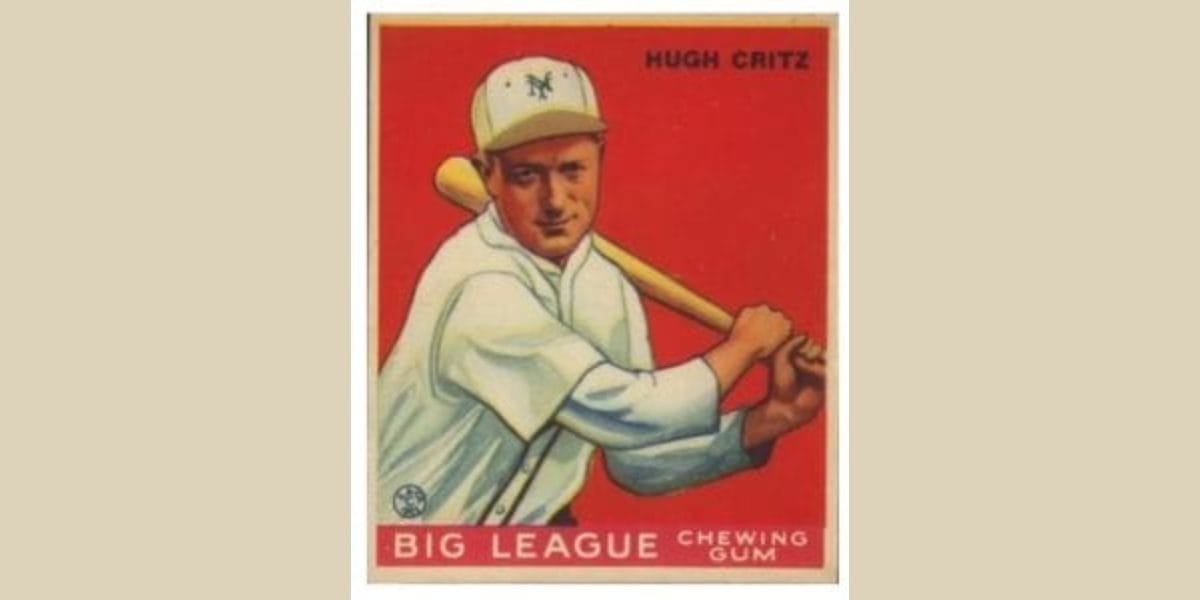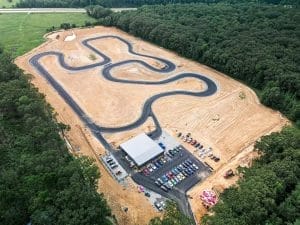

Uh oh...
It appears that you're using a severely outdated version of Safari on Windows. Many features won't work correctly, and functionality can't be guaranteed. Please try viewing this website in Edge, Mozilla, Chrome, or another modern browser. Sorry for any inconvenience this may have caused!
Read More about this safari issue.

One hundred years ago this month, Hughie Critz celebrated his 24th birthday playing second base for the Cincinnati Reds. Critz had been promoted in late May from Minneapolis in Cincinnati’s minor league system as a temporary replacement for injured second baseman Sam Bohne. Most writers covering the Reds expected Critz’s stay in the majors to be brief.
Critz got his first start on May 31, 1924. On that Saturday, the Reds were in Chicago playing the Cubs in a historic ballpark that would become Wrigley Field in 1928. Pitching for the Cubs in the newcomer’s first big-league game was a 37-year-old Future Hall of Famer named Grover Cleveland Alexander. The colorful hurler known as “Ole Pete” was among the best pitchers in baseball before World War I, but by 1924, most baseball men thought the hard-living veteran was in the twilight of his career. That would not be the case.

Hugh Critz Sr. and Hughie Critz 1923
If Hughie Critz was intimidated playing in Cubs Park and facing a legendary pitcher in his debut, he did not perform like a terrified rookie. In his first major league at-bat, the speedy Critz beat out a ground ball between shortstop and third for the Reds’ first hit of the game. He singled again in the fifth inning and although the Reds fell 6-3 to the Cubs, Hughie Critz had two hits in the first major league baseball game he had ever seen. Bohne never got his spot back.
Although Hugh Melville Critz was not expected to be the Cincinnati second baseman in 1924, he had been on the Reds’ radar for the last three years. He had graduated from Mississippi A&M in the spring of 1920, a college baseball star with no intention of trying pro baseball. Critz would later say, “As a matter of fact, I did not care about baseball.” After graduation, Critz became a cotton buyer in Greenwood, Mississippi, and played semi-pro baseball until late summer, when he joined his family in Russellville, Arkansas.
Critz’s life made a dramatic turn that summer in Arkansas. Known as Melville back home in Mississippi, he would be “Hughie” in Russellville. His father, Hugh Critz Sr., had become the extremely popular president of 2nd District Agriculture School in 1918, and his success at the future Arkansas Tech University had made the elder Hugh Critz well-known locally. In the next four years, the younger Critz would become famous on the national stage.

Hugh Jr. had gone all in for his adopted new home in Arkansas. In the 1920 Mississippi A&M yearbook, Critz listed his home as Russellville, Arkansas, and he had joined a campus organization called the “Arkansas Club.” After moving to Arkansas, life was good for Hughie Critz. He began dating Mary Wiggs, the daughter of a Russellville druggist, and he quickly became a star on the local semi-pro town team.
If Hughie Critz had gone undiscovered playing semi-pro baseball in his new hometown, that obscurity would have ended on Labor Day 1920. In a highly publicized holiday game in Little Rock matching the Southern Arkansas All-Stars and the Arkansas River Valley All-Stars, 19-year-old Hughie Critz was the acknowledged star. The Arkansas Gazette reported, “The diminutive 19-year-old leadoff man had four hits in eight at-bats for the day and . . . flashed all over the field and threw accurately from all positions.” Pro scouts in attendance took notice.
Since his adventure as a businessman had turned out to be less than exciting, Critz decided playing baseball for pay might be a better opportunity. He did not have to go far. The semi-pro team he had played for the previous summer was now the Greenwood Indians in the Mississippi State League. Critz hit .299 in his first minor league season and won rave reviews for his defense. That winter, on December 28, 1921, he and Mary Wiggs were married in Russellville, Arkansas.

Hughie Critz and Grover Cleveland Alexander
Young Critz moved quickly through the minor leagues, hitting well enough, but playing various infield positions at an elevated level. In just over 400 minor league at-bats, Critz batted .309 with 17 home runs and 30 triples. Cincinnati purchased his contract from the Class AAA Minneapolis Millers on May 29, 1924. Hughie Critz would never play another minor league game. Beginning the day he was in the lineup because of an injury to the second baseman, Hughie Critz was the Reds’ second baseman for the next eight seasons.
As the home run emerged as the popular offensive weapon in the 1920s, Hughie Critz was an anomaly among the stars of the time. Recognized as one of the outstanding defensive players in the game, in his first six years in Cincinnati, Critz averaged three home runs a season, and fewer than 30 extra-base hits. Despite his weak hitting, he became one of the most popular players, both with the fans and among his fellow players.
One obvious indicator of the respect the baseball community had for Critz’s defensive skills was the voting results for the annual National League Most Valuable Player Award. Critz finished second in the MVP vote to Bob O’Farrell of the Cardinals in 1926, fourth in 1928, and among the top 20 vote-getters in two other seasons. During those years, he led the National League second basemen in Fielding Percentage two times and finished in the top five on three more occasions.
Cincinnati had been close to a pennant early in Critz’s years with the team, but by the end of the decade, the Reds were buried in the second division. Management decided changes were necessary. The team needed pitching. On May 21, 1930, the Reds traded 29-year-old Hughie Critz to the New York Giants for a starting pitcher named Larry Benton.
Benton had won 25 games to lead the league in victories in 1928, but after coming to the Reds, he would never have another winning season. Hughie Critz would continue to be what he had always been, a mediocre hitter and the best fielding second baseman in baseball. In 1933, the Giants won the World Series with weak-hitting defensive wizard Hughie Critz at second base.

Critz was immediately one of the Giants’ most popular players. Baseball in the 1930s was played in northern cities by country boys from the South. Sportswriters loved the homespun yarns the players shared, and, despite his college education, Hughie Critz would readily oblige. Critz was known in his New York years as the “Country Gentleman.” He often wore a black fedora and used an unlit cigar as a prop when he held court with the writers. Described by one writer as a “slow talker but a quick thinker,” Critz regaled listeners with tales of southern ballplayers and country life.
After an injury-plagued 1935 campaign that saw him fight an infected spike cut on his hand, Hughie Critz hung up his glove and returned to his Mississippi farm. He and Mary lived in Greenwood, Mississippi, for the rest of their lives, and Critz became a gentleman farmer, businessman, and community leader.
According to his biography in the SABR Bio Project, Hughie Critz led the league in major fielding categories 19 times. That number changes each time a new analytical tool is retroactively applied to his resume. Using the existing criteria, he finished in the top five in the major fielding evaluation stats for a season 46 times.
Critz appeared on the Baseball Hall of Fame ballot in 1956. He received one vote, and he never appeared on the ballot again. Hughie Critz was inducted into the Cincinnati Reds Hall of Fame in 1962, the Mississippi Sports Hall of Fame in 1963, and the Mississippi State University Hall of Fame in 1970.
Join the Conversation
Leave a Comment
One response to “Hughie Critz | The President’s Son”
 Leave a Reply
Leave a Reply
We do the work.
You check your email.
Sign up for our weekly e-news.
Get stories sent straight to your inbox!












 Leave a Reply
Leave a Reply
[…] locally as “Hughie,” would soon become a celebrity in his new hometown. By the early 1920s, “Hughie” Critz was on his way to becoming a major league baseball […]